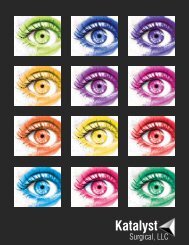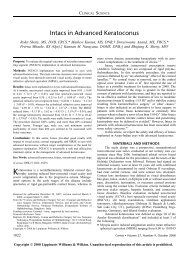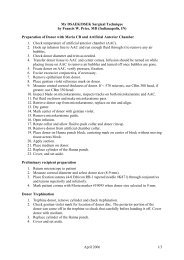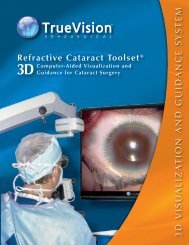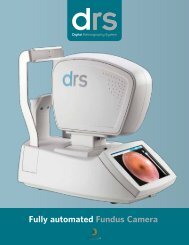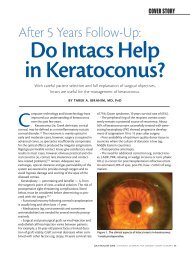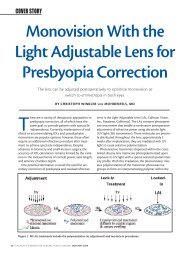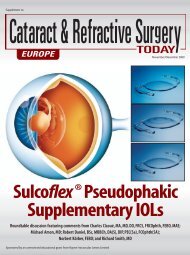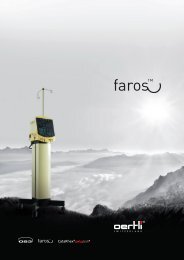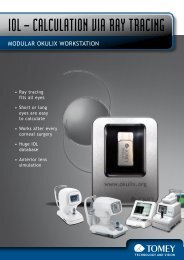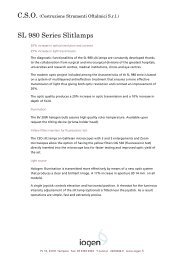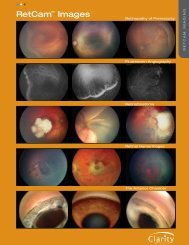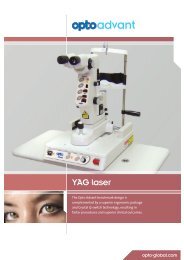Correction of Residual Hyperopia After Cataract Surgery ... - Iogen
Correction of Residual Hyperopia After Cataract Surgery ... - Iogen
Correction of Residual Hyperopia After Cataract Surgery ... - Iogen
Create successful ePaper yourself
Turn your PDF publications into a flip-book with our unique Google optimized e-Paper software.
FIGURE 3. Bar graph <strong>of</strong> uncorrected visual acuity (UCVA) before and after hyperopic corrections in patients with light<br />
adjustable IOL technology. UCVA was expressed by converting the Snellen fraction to a numerical number, 20/20 1.0,<br />
20/25 0.8, 20/30 0.67, 20/40 0.5, 20/50 0.4, 20/60 0.33, 20/80 0.25, and 20/100 0.2. Significant<br />
improvement in UCVA was observed in 64% <strong>of</strong> eyes. Of 14 eyes, 10 eyes (71%) achieved an UCVA <strong>of</strong> 20/25 or better. All<br />
eyes were 20/30 or better and stable for a follow-up period up to six months.<br />
FIGURE 4. Bar graph <strong>of</strong> best-corrected visual acuity (BCVA) before and after hyperopic corrections in patients with light<br />
adjustable IOL technology. BCVA was expressed by converting the Snellen fraction to a numerical number, 20/20 1.0,<br />
20/25 0.8, 20/30 0.67, 20/40 0.5, 20/50 0.4, 20/60 0.33, 20/80 0.25, and 20/100 0.2. All eyes were stable<br />
and able to maintain their preadjustment BCVA.<br />
<strong>Correction</strong> <strong>of</strong> hyperopia between 0.25 to 2.0 D was<br />
achieved with 90% <strong>of</strong> patients corrected to within 0.25<br />
D <strong>of</strong> the intended refraction. While this was a feasibility<br />
study and adjustments were performed in patients who had<br />
not had previous refractive surgery, it is likely that correction<br />
<strong>of</strong> hyperopia could be performed in a similar fashion in<br />
these patients as well.<br />
Uncorrected VA improved in 64% <strong>of</strong> patients while<br />
BCVAs was maintained after lock-in in all patients. The<br />
uncorrected and best-corrected VAs were stable for all<br />
patients up to six months follow-up visit. One hundred<br />
percent <strong>of</strong> the eyes were stable within 0.25 D with 13<br />
eyes showing no change at one to six months follow-up<br />
visits.<br />
396 AMERICAN JOURNAL OF OPHTHALMOLOGY<br />
MARCH 2009



